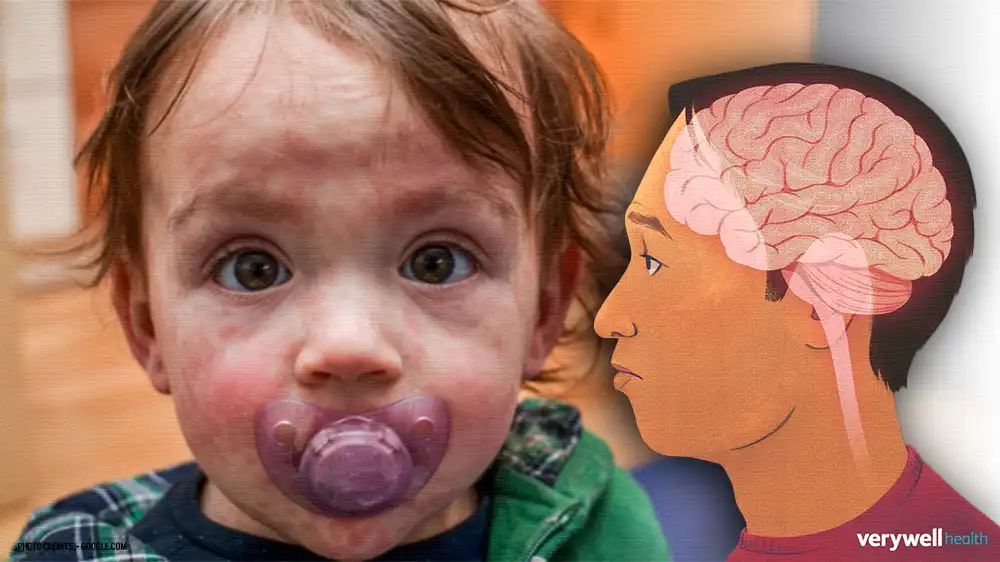
NEUROSCIENCE
Encephalitis: Causes, Symptoms, and Latest Treatments
-
Rahul Priydarss
Discover comprehensive insights into encephalitis: its causes range from viral infections to autoimmune reactions, leading to severe neurological complications like seizures and cognitive deficits. Learn about symptoms such as fever, headache, confusion, and the importance of early diagnosis through clinical evaluation and imaging tests. Treatment options include antiviral medications, antibiotics, and corticosteroids to manage inflammation and symptoms. Prevention strategies emphasize vaccination, mosquito control, and hygiene practices to reduce infection risks. Stay informed about ongoing research advancements in viral genomics, diagnostic innovations, and therapeutic developments aimed at improving outcomes and quality of life for those affected by this complex neurological condition. Understand the global impact and collaborative efforts to enhance awareness, diagnosis, and effective management of encephalitis across diverse populations and healthcare settings.
Introduction to Encephalitis:
Encephalitis, characterized by inflammation of the brain tissue, represents a significant medical challenge due to its diverse causes, ranging from viral infections to autoimmune reactions. This condition can lead to serious neurological complications, including seizures, cognitive deficits, and in severe cases, coma or death. Encephalitis can be caused by various pathogens such as viruses (e.g., herpes simplex virus, West Nile virus), bacteria (e.g., Lyme disease), fungi, or even by the body’s immune system mistakenly attacking its brain tissue.
What is Encephalitis?:
Encephalitis is a medical condition characterized by inflammation of the brain. This inflammation is often caused by infections, most commonly viral, but can also result from bacterial, fungal, or parasitic infections. In some cases, it can be triggered by an autoimmune response, where the body’s immune system mistakenly attacks its brain tissue. Symptoms of encephalitis can vary widely, including fever, headache, confusion, seizures, and muscle weakness. The condition can range from mild to severe and may lead to serious complications or long-term neurological damage if not promptly treated. Early diagnosis and appropriate medical intervention are essential for managing encephalitis effectively.

Table of Contents
Causes of Encephalitis:
Encephalitis can be caused by various factors, primarily infections and autoimmune reactions. The main causes include.
Viral Infections:
This is the most common cause of encephalitis. Viruses that can lead to encephalitis include.
- Herpes Simplex Virus (HSV): Particularly HSV-1, which is also responsible for cold sores.
- West Nile Virus: Transmitted by mosquitoes.
- Enteroviruses: Such as the poliovirus.
- Arboviruses: Such as those causing Japanese encephalitis and tick-borne encephalitis.
- Rabies Virus: Typically transmitted through animal bites.
- Measles, Mumps, and Rubella Viruses: Particularly in unvaccinated individuals.
Bacterial Infections:
Although less common, bacterial infections can cause encephalitis. Bacteria responsible include.
- Bacterial Meningitis: Can sometimes lead to encephalitis.
- Syphilis and Lyme Disease: Caused by specific types of bacteria.
Fungal Infections:
Rare but possible, especially in individuals with weakened immune systems. Examples include.
- Cryptococcus: Common in individuals with HIV/AIDS.
- Histoplasmosis and Coccidioidomycosis: Regional fungal infections.
Parasitic Infections:
Also rare, but can occur, particularly in tropical regions. Examples include.
- Toxoplasmosis: Often affecting individuals with compromised immune systems.
- Malaria and Naegleria fowleri: A brain-eating amoeba.
Autoimmune Reactions:
The immune system mistakenly attacks the brain, leading to inflammation. This can occur as a primary autoimmune condition or secondary to infections or other triggers. Conditions include.
- Anti-NMDA Receptor Encephalitis: An autoimmune response against specific brain receptors.
- Acute Disseminated Encephalomyelitis (ADEM): Often follows infections or vaccinations.
Other Causes:
Rarely, encephalitis can be caused by.
- Toxic Substances: Exposure to certain chemicals or drugs.
- Paraneoplastic Encephalitis: Associated with cancer, where the body’s immune response to a tumor also attacks the brain.
Types of Encephalitis:
Encephalitis can be classified based on its causes, underlying mechanisms, and the specific regions of the brain it affects. Here are the main types.
Primary Encephalitis:
- Viral Encephalitis: Caused directly by a viral infection. Examples include:
- Herpes Simplex Encephalitis: Caused by the herpes simplex virus (HSV), particularly HSV-1.
- Arboviral Encephalitis: Caused by arthropod-borne viruses, such as the West Nile virus, Japanese encephalitis virus, and tick-borne encephalitis virus.
- Rabies Encephalitis: Caused by the rabies virus, typically transmitted through animal bites.
- Enteroviral Encephalitis: Caused by enteroviruses, such as poliovirus and coxsackievirus.
Post-Infectious Encephalitis:
- Acute Disseminated Encephalomyelitis (ADEM): An autoimmune condition that typically follows a viral or bacterial infection. The immune system mistakenly attacks the brain and spinal cord, causing inflammation.
- Rasmussen’s Encephalitis: A rare chronic inflammatory neurological disease, usually affecting one hemisphere of the brain, leading to seizures and progressive neurological deficits.
Autoimmune Encephalitis:
- Anti-NMDA Receptor Encephalitis: An autoimmune disorder where antibodies target NMDA receptors in the brain, leading to psychiatric symptoms, seizures, and cognitive dysfunction.
- Limbic Encephalitis: An autoimmune condition affecting the limbic system, often associated with cancer (paraneoplastic syndrome).
Paraneoplastic Encephalitis:
- Paraneoplastic Limbic Encephalitis: Caused by an immune response to a tumor located outside the nervous system. The body’s immune response mistakenly attacks the brain tissue, particularly in the limbic system.
Bacterial Encephalitis:
- Lyme Neuroborreliosis: Caused by the bacteria Borrelia burgdorferi, transmitted by tick bites, and can lead to inflammation of the brain and spinal cord.
- Syphilitic Encephalitis: Caused by the bacterium Treponema pallidum, which causes syphilis.
Fungal Encephalitis:
- Cryptococcal Encephalitis: Caused by the fungus Cryptococcus, commonly affecting immunocompromised individuals, such as those with HIV/AIDS.
- Aspergillus Encephalitis: Caused by the Aspergillus fungus, typically in immunocompromised individuals.
Parasitic Encephalitis:
- Toxoplasmic Encephalitis: Caused by the parasite Toxoplasma gondii, often affecting individuals with weakened immune systems.
- Cerebral Malaria: Caused by Plasmodium falciparum, a parasite transmitted by mosquitoes.
Toxic Encephalitis:
- Drug-Induced Encephalitis: Resulting from toxic reactions to certain medications or substances.
- Heavy Metal Encephalitis: Caused by exposure to toxic levels of heavy metals, such as lead or mercury.
Symptoms of Encephalitis:
Encephalitis is an inflammation of the brain, often caused by infections such as viruses. Symptoms can vary depending on the severity of the inflammation and the areas of the brain affected. Common symptoms include:
Early Symptoms:
- Fever: Often accompanied by chills.
- Headache: Persistent and severe.
- Fatigue: Extreme tiredness and weakness.
- Muscle and Joint Aches: General discomfort.
Neurological Symptoms:
- Confusion: Difficulty in thinking or understanding.
- Seizures: Uncontrolled electrical activity in the brain.
- Sensory Problems: Such as light sensitivity or visual disturbances.
- Speech or Hearing Problems: Difficulty in speaking or understanding speech.
- Movement Problems: Including clumsiness, unsteady gait, or weakness.
- Altered Consciousness: Ranging from mild lethargy to deep coma.
Behavioral and Cognitive Symptoms:
- Personality Changes: Uncharacteristic behavior or mood swings.
- Memory Problems: Difficulty in recalling recent events.
- Hallucinations: Seeing or hearing things that are not there.
Severe Symptoms:
- Loss of Consciousness: Partial or complete.
- Severe Headaches: Persistent and intense pain.
- High Fever: Above 103°F (39.4°C).
- Paralysis: Partial or complete loss of muscle function.
- Severe Neurological Deficits: Long-term effects like memory loss or cognitive impairments.
Additional Symptoms in Children:
- Bulging in the Soft Spots of the Skull (Fontanels): In infants.
- Nausea and Vomiting: Accompanied by refusal to eat.
- Body Stiffness: Unusual rigidity.
- Irritability: Persistent crying that doesn’t improve with usual comforting methods.

Diagnosing Of Encephalitis:
Diagnosing encephalitis involves a combination of clinical evaluation, laboratory tests, and imaging studies to determine the presence and cause of brain inflammation. Here are the main steps and methods used in diagnosing encephalitis.
Clinical Evaluation:
- Medical History: Review of symptoms, recent infections, travel history, vaccination status, and any pre-existing conditions.
- Physical Examination: Neurological exam to assess cognitive function, motor skills, sensory response, reflexes, and coordination.
Laboratory Tests:
- Blood Tests: To check for signs of infection, inflammation, and immune response. Specific tests might include:
- Complete Blood Count (CBC)
- Blood cultures
- Antibody tests for specific viruses
- Polymerase Chain Reaction (PCR) to detect viral DNA or RNA
- Lumbar Puncture (Spinal Tap): To collect cerebrospinal fluid (CSF) for analysis. This can help identify:
- Elevated white blood cell count
- Increased protein levels
- Presence of viruses or bacteria
- Specific antibodies indicating infection
Imaging Studies:
- Magnetic Resonance Imaging (MRI): Preferred imaging method to detect brain abnormalities such as swelling, lesions, or inflammation.
- Computed Tomography (CT) Scan: Used when MRI is not available or contraindicated, to identify swelling, bleeding, or other structural changes.
Electroencephalogram (EEG):
- EEG: Measures electrical activity in the brain and can help identify abnormal brain waves associated with encephalitis.
Brain Biopsy:
- In rare cases where the diagnosis is unclear, a small sample of brain tissue may be taken for examination.
Additional Tests:
- Nasal Swabs or Throat Cultures: To detect respiratory viruses that may have spread to the brain.
- Urine Tests: To identify potential pathogens.
- Chest X-rays: To look for signs of infections that may have spread to the brain.
Differential Diagnosis:
- Doctors will also consider and rule out other conditions with similar symptoms, such as meningitis, brain tumors, autoimmune diseases, and other neurological disorders.
Specialist Consultation:
- In complex cases, consultation with a neurologist, infectious disease specialist, or other experts may be necessary for a comprehensive evaluation and accurate diagnosis.
Treatment of Encephalitis:
The treatment of encephalitis depends on the underlying cause, severity of symptoms, and the patient’s overall health. The primary goals are to reduce inflammation, manage symptoms, and treat the underlying infection if present. Here are the main treatment options.
1. Antiviral Medications:
- For Viral Encephalitis: Antiviral medications are most effective against certain viruses. Commonly used antivirals include:
- Acyclovir: For herpes simplex virus (HSV) and varicella-zoster virus (VZV).
- Ganciclovir: For cytomegalovirus (CMV).
- Ribavirin: For certain types of viral encephalitis, such as those caused by arenaviruses and bunyaviruses.
2. Antibiotics:
- For Bacterial Encephalitis: If a bacterial infection is identified, appropriate antibiotics are administered. Treatment is often started immediately if bacterial encephalitis is suspected.
3. Corticosteroids:
- To Reduce Inflammation: Corticosteroids like dexamethasone may be used to decrease brain inflammation and swelling, especially if the cause of encephalitis is immune-mediated or inflammatory.
4. Anticonvulsants:
- For Seizure Control: Medications such as phenytoin, levetiracetam, or valproic acid may be prescribed to prevent or manage seizures.
5. Supportive Care:
- Hospitalization: Severe cases often require hospitalization for close monitoring and supportive care.
- Intravenous Fluids: To maintain hydration and electrolyte balance.
- Pain Management: Analgesics to relieve headaches and body aches.
- Fever Control: Antipyretics like acetaminophen to manage fever.
6. Immune-Based Therapies:
- For Autoimmune Encephalitis: Treatments such as intravenous immunoglobulin (IVIG), plasmapheresis (plasma exchange), or immunosuppressive drugs like rituximab may be used to modulate the immune response.
7. Rehabilitation:
- Post-Acute Phase: Once the acute infection is under control, rehabilitation may be necessary to address neurological deficits. This can include:
- Physical Therapy: To improve strength and coordination.
- Occupational Therapy: To help with daily activities and cognitive function.
- Speech Therapy: For speech and language difficulties.
8. Treatment of Complications:
- Managing Long-Term Effects: Depending on the severity of the encephalitis and the areas of the brain affected, patients may need ongoing treatment for complications such as memory problems, mood disorders, or chronic headaches.
9. Preventive Measures:
- Vaccination: Preventing infections that can lead to encephalitis through vaccination (e.g., measles, mumps, rubella, influenza, and Japanese encephalitis vaccines).
- Vector Control: Measures to control mosquito populations in areas where mosquito-borne encephalitis is common.
- Hygiene Practices: Good hygiene to prevent infections such as HSV.
Japanese Encephalitis Vaccine:
Japanese encephalitis (JE) vaccine is essential for travelers visiting regions where the disease is prevalent, predominantly in rural areas of Asia and the Western Pacific. The vaccine is particularly recommended for individuals planning extended stays or engaging in outdoor activities during the transmission season, typically from summer to fall.
Types and Administration: There are two primary types of Japanese encephalitis vaccines available: inactivated and live attenuated. The inactivated vaccine requires multiple doses administered over several weeks before travel for optimal protection. On the other hand, the live attenuated vaccine is administered as a single dose, primarily suitable for individuals aged 2 months to 17 years old. The vaccination schedule should be carefully planned in consultation with a healthcare provider to ensure adequate protection before travel.
Effectiveness and Protection: The JE vaccine is highly effective in preventing Japanese encephalitis, a viral infection transmitted by mosquitoes, particularly of the Culex species. Protection typically begins to develop about two weeks after receiving the vaccine series or a single dose, depending on the type chosen. This vaccine significantly reduces the risk of contracting the disease, which can lead to severe neurological complications and even death in some cases.
Risks and Side Effects: Common side effects of the Japanese encephalitis vaccine include soreness at the injection site, mild fever, and occasionally, headache or fatigue. Serious side effects are rare but can include allergic reactions. Healthcare providers evaluate the risks versus benefits for each individual, especially those with pre-existing medical conditions or allergies to vaccine components, to determine suitability for vaccination.
Precautions and Additional Measures: While vaccination is critical, travelers should also take additional precautions to avoid mosquito bites, as mosquitoes are the primary vectors of the JE virus. Measures include using insect repellents containing DEET or picaridin, wearing long-sleeved shirts and pants treated with permethrin, and staying in accommodations with air conditioning or screens on windows and doors. These precautions complement the vaccine’s protection and reduce the risk of mosquito bites during travel.
Prevention of Encephalitis:
Preventing encephalitis primarily involves reducing the risk of infections that can lead to the condition. Here are key preventive measures.
1. Vaccination:
- Routine Vaccinations: Ensure you and your family are up-to-date with vaccinations recommended by health authorities. Vaccines can prevent infections that commonly cause encephalitis, such as:
- Measles, Mumps, Rubella (MMR): Protects against measles, mumps, and rubella viruses.
- Varicella (Chickenpox): Prevents varicella-zoster virus infection.
- Influenza (Flu): Annual vaccination reduces the risk of influenza-related complications.
- Japanese Encephalitis: Recommended for travelers to regions where this virus is endemic.
2. Mosquito Control:
- Mosquito-Borne Viruses: Encephalitis viruses like West Nile virus, Eastern equine encephalitis virus, and others are spread by mosquitoes. To reduce exposure:
- Use insect repellents containing DEET, picaridin, or oil of lemon eucalyptus.
- Wear long-sleeved shirts and long pants, especially during peak mosquito activity times.
- Install or repair window and door screens to keep mosquitoes outside.
- Eliminate standing water around your home where mosquitoes breed (e.g., in flower pots, gutters, and bird baths).
3. Practice Good Hygiene:
- Handwashing: Regularly wash hands with soap and water, especially after using the bathroom, changing diapers, and before eating or preparing food.
- Respiratory Etiquette: Cover mouth and nose with a tissue or elbow when coughing or sneezing to prevent the spread of respiratory viruses.
4. Avoiding Animal Exposure:
- Animal-Borne Diseases: Some infections, such as rabies, can lead to encephalitis if left untreated. Avoid contact with wild animals and ensure pets are vaccinated against rabies.
5. Food Safety:
- Prevent Foodborne Infections: Handle, cook, and store food safely to reduce the risk of infections such as listeriosis, which can lead to encephalitis.
6. Travel Precautions:
- Travel Health Advice: Check with healthcare providers or travel clinics for recommended vaccinations and precautions specific to your destination, especially in areas where encephalitis viruses are endemic.
7. Prompt Medical Attention:
- Early Diagnosis and Treatment: Seek medical attention promptly if you suspect any symptoms of encephalitis or have been exposed to potentially infectious sources.
Research and Advances in Encephalitis:
Research in encephalitis is advancing across multiple fronts, focusing on understanding, diagnosing, treating, and preventing this complex neurological condition. Recent studies delve into viral genomics to decipher the genetic makeup of encephalitis-causing viruses, shedding light on their evolution and pathogenic mechanisms. Concurrently, diagnostic innovations explore novel biomarkers in blood and cerebrospinal fluid, alongside advanced imaging techniques like MRI and PET scans, to better visualize brain inflammation and structural changes. Treatment strategies are also evolving with emphasis on developing and optimizing antiviral therapies, as well as exploring immunomodulatory treatments to mitigate inflammation and neurological damage.
In preventive measures, researchers are intensifying efforts in vaccine development against known and emerging viral causes of encephalitis, alongside innovations in vector control strategies to curb mosquito-borne infections. These advancements are complemented by studies in neurological rehabilitation, aiming to enhance cognitive recovery and quality of life for encephalitis survivors. As collaborative networks expand and data sharing improves, international efforts are poised to strengthen epidemiological surveillance, genetic susceptibility studies, and the application of precision medicine approaches tailored to individual patient needs.
FAQs about Encephalitis:
A1: Encephalitis is inflammation of the brain tissue, often caused by viral infections but can also result from bacterial, fungal, or autoimmune reactions. It can lead to serious neurological complications if untreated.
A2: Symptoms of encephalitis can include fever, headache, confusion, seizures, muscle weakness, and in severe cases, coma. Neurological and behavioral changes may also occur.
A3: Encephalitis can be caused by pathogens such as herpes simplex virus, West Nile virus, bacteria like Lyme disease, fungi such as Cryptococcus, parasites like Toxoplasma gondii, and even autoimmune responses.
A4: Diagnosis involves a combination of clinical evaluation, blood tests, imaging (MRI or CT scans), and sometimes a lumbar puncture to analyze cerebrospinal fluid for signs of infection or inflammation.
A5: Treatment depends on the cause and severity but often includes antiviral medications (for viral encephalitis), antibiotics (for bacterial causes), corticosteroids to reduce inflammation, and supportive care to manage symptoms and complications.
-Please remember, to always consult with healthcare professionals or Doctors for personalized advice related to medical conditions.
Conclusion:
Encephalitis, marked by inflammation of the brain tissue, poses significant medical challenges due to its diverse causes—from viral infections to autoimmune responses. This condition can lead to severe neurological complications such as seizures and cognitive deficits, underscoring the urgency of early diagnosis and intervention. Advances in research are pivotal, focusing on viral genomics, diagnostic biomarkers, and innovative treatments like antiviral therapies and immunomodulation. Prevention strategies, including vaccination and vector control, are crucial in curbing infections. Collaborative efforts and data sharing are enhancing global responses to improve outcomes and quality of life for those affected by this complex neurological disorder.




